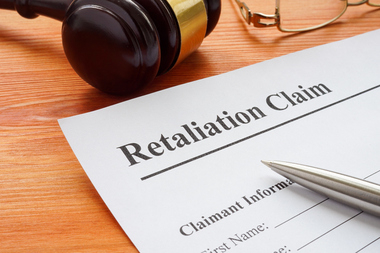Every year, the EEOC receives thousands of complaints from employees who believe their workplace discriminated against them. Those who file have a wide range of complaints: They may have been denied a promotion or a job, unjustly fired, or paid less than other comparable employees. But in fiscal year 2020, a whopping 55.8% of cases fell into a category the agency calls retaliation claims. What is a retaliation claim, and how can your company protect itself against one?
Know the meaning of ‘retaliation’
According to Nolo’s law dictionary, retaliation is “punishment of an employee by an employer for engaging in legally protected activity such as making a complaint of harassment or participating in workplace investigations. Retaliation may take the form of discipline, demotion, firing, job reassignment, pay reduction, denial of benefits or other adverse employment actions.”
There are over 20 federal whistleblower laws that protect employees from retaliation. The Occupational Safety and Health Administration (OSHA) enforces these laws. Many states have whistleblower laws as well.
Implement an anti-retaliation program
OSHA recommends that employers develop an anti-retaliation program that includes the following five components:
- Management leadership, commitment and accountability. Management must adopt an anti-retaliation culture and lead by example. All leaders should undergo anti-retaliation training that comprehensively covers workplace retaliation and prevention methods.
- A system for listening to and properly handling employees’ concerns about safety and compliance. Ideally, you should have multiple channels that employees can use to report concerns or violations relating to ethics, safety and compliance. Also important is safeguarding the confidentiality of employees who report concerns or violations. Make sure employees know the system is available and do not discourage them from using it.
- A system for obtaining and responding to retaliation reports. Per OSHA, “Employees who believe they have experienced retaliation should have independent channels for reporting the retaliation; they should not be required to report to the manager who they believe retaliated against them.” Employees should also be able to escalate the issue to higher-ups, if needed.
- Anti-retaliation training for both managers and rank-and-file employees. Anti-retaliation training equips managers and employees with the information, skills and tools needed to identify, report and appropriately manage retaliation and potential hazards. All employees should be trained on their rights and obligations when it comes to reporting potential or existing hazards and violations.
- Anti-retaliation program oversight. Employers should have an “oversight” plan that helps them determine whether the anti-retaliation program is working as expected. The plan should include program monitoring and auditing, sources of information that must be analyzed during oversight, and how to use the results derived from the oversight.
Establish a complaint hotline
You may reduce retaliation claims by providing employees with a complaint hotline. The hotline can help you address an issue promptly and effectively so that it doesn’t end in a retaliation claim.
Create unambiguous policies on retaliation
Your company’s stance on retaliation should be clear and written in plain language. In the policy, state what constitutes retaliation at your company and the consequences of engaging in retaliatory behavior. Distribute the written policy to employees at all levels and update it whenever relevant laws and protocols change. If you are unclear about how to set up and enforce a policy, work with qualified human resources professionals.

